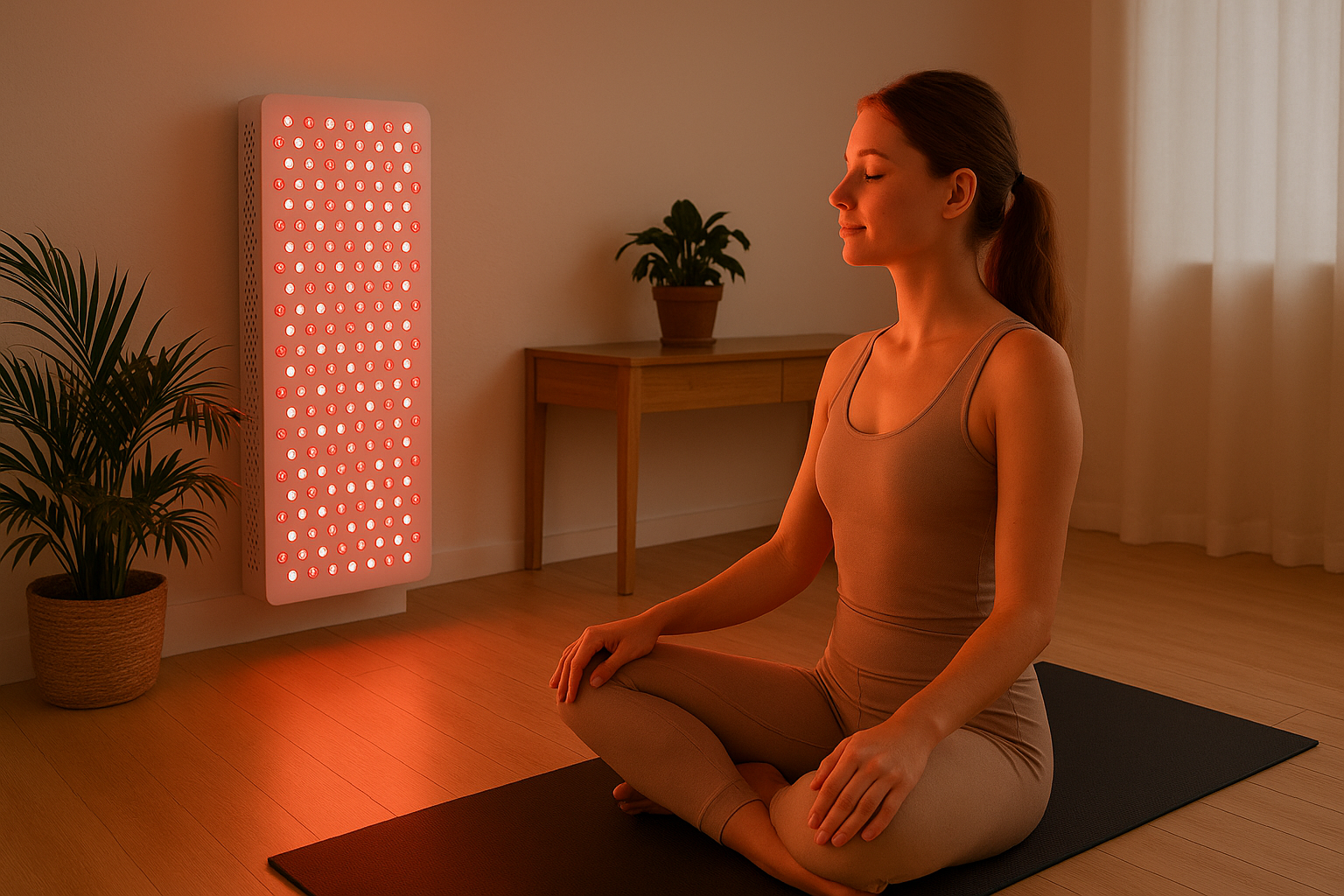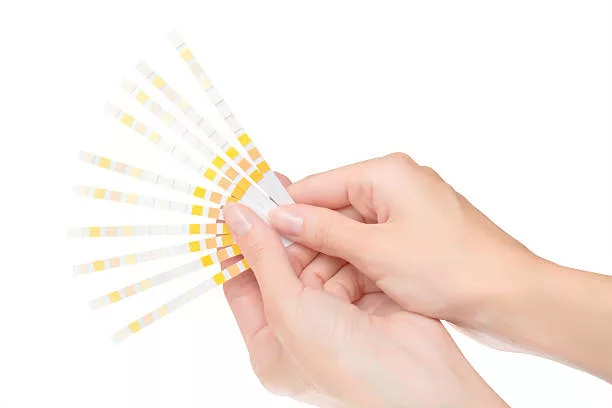If you’ve heard about infrared light therapy (ILT) but aren’t sure what it is or how it works, you’re in the right place. This beginner’s guide will break down everything you need to know—from the science behind it to how you can use it at home.
Infrared Light Therapy (ILT), also known as infrared phototherapy or photobiomodulation, is rapidly emerging as one of the most intriguing and promising modalities in modern healthcare, wellness, and cosmetic treatments. Rooted deeply in science yet embraced by holistic practitioners, athletes, and beauty enthusiasts alike, ILT leverages the unique properties of infrared wavelengths to stimulate natural healing and rejuvenation processes within the body.
What makes infrared therapy particularly appealing is its non-invasive nature and its ability to offer significant benefits with minimal risk or side effects. Unlike many conventional medical treatments, ILT works harmoniously with the body’s biology, enhancing cellular functions, improving circulation, and promoting overall wellness without the use of drugs or invasive procedures.
The recent surge in popularity of infrared therapies is driven by a growing body of scientific research affirming its efficacy in pain management, inflammation reduction, athletic recovery, skin rejuvenation, and even neurological health improvements. Moreover, the ease of use provided by home infrared devices such as lamps, wraps, and personal saunas has contributed significantly to its adoption by the general public.
As interest and curiosity about Infrared Light Therapy continue to grow, understanding precisely how it works, what its potential benefits and limitations are, and how to use it effectively becomes increasingly important. This guide will demystify Infrared Light Therapy, exploring the science behind it, examining the various applications, and providing practical insights into integrating ILT safely and effectively into daily life.
By the end, you’ll understand:
✔ What infrared light therapy is (and how it differs from regular light).
✔ How it works in the body (the science made simple).
✔ Key benefits (pain relief, skin health, recovery, and more).
✔ How to try it safely (devices, timing, and precautions).
Let’s dive in!
Medical Disclaimer
The information provided in this article, “Infrared Light Therapy 101: What It Is and How It Works,” is intended for educational and informational purposes only. It is not a substitute for professional medical advice, diagnosis, or treatment. Always consult with a qualified healthcare provider or physician before starting any new therapy, especially if you have a medical condition, are pregnant, or are taking medications that may cause sensitivity to light.
Infrared light therapy is generally considered safe, but individual results may vary. The content presented here is based on current research, user experiences, and publicly available sources, and does not constitute medical or therapeutic recommendations.
Use of any products, devices, or techniques mentioned in this article is at the reader’s own discretion and risk
What Is Infrared Light Therapy?
Infrared Light Therapy involves the use of infrared wavelengths, a specific part of the electromagnetic spectrum, which lies just beyond the visible spectrum of light. This type of therapy harnesses these wavelengths to penetrate the body’s tissues at varying depths, depending on their specific type and length.
Understanding Infrared Light
Infrared light is invisible to the human eye but can be felt as heat. Its wavelengths range approximately from 700 nm to 1 mm. These wavelengths are divided into three main categories:
• Near-Infrared (NIR): 700 nm to 1400 nm – This type penetrates the deepest into tissues, reaching muscles and even bones, and is commonly used for improving cellular function and deep tissue healing.
• Mid-Infrared (MIR): 1400 nm to 3000 nm – Penetrates moderately deep, beneficial primarily for circulation improvement and inflammation reduction.
• Far-Infrared (FIR): 3000 nm to 1 mm – Penetrates superficially, mostly affecting the skin and underlying tissues, commonly used in skin care and sauna therapy.
How Does Infrared Light Therapy Work?
The fundamental principle behind ILT is photobiomodulation, a biological process where cells respond positively to certain wavelengths of light. When infrared photons penetrate tissues, they interact with cells, specifically mitochondria, enhancing cellular metabolism, boosting energy production (ATP), improving circulation, and promoting faster tissue repair.
The Therapeutic Process
During infrared therapy, specialized devices such as infrared lamps, sauna chambers, or handheld tools deliver controlled infrared energy directly to targeted areas or the whole body. Users typically experience gentle warming sensations, leading to relaxed muscles and improved blood flow, stimulating the body’s natural healing processes.
Understanding these basics helps clarify how ILT can effectively aid in health and wellness routines, providing a solid foundation for exploring its broader therapeutic applications discussed in later chapters.
The Science Behind Infrared Light Therapy
Infrared Light Therapy’s effectiveness is grounded in photobiomodulation, a scientifically validated biological process that explains how specific wavelengths of light can positively affect cellular function and health outcomes.
Cellular Interaction
When infrared light penetrates the skin, it interacts primarily with mitochondria—the powerhouse of cells. Mitochondria contain an enzyme called cytochrome c oxidase (CcO), which plays a crucial role in the cellular energy production process. Infrared light stimulates this enzyme, increasing the rate at which cells produce adenosine triphosphate (ATP), the molecule responsible for energy transfer within cells.
Photobiomodulation Explained
Photobiomodulation refers to the biochemical process triggered by exposure to specific wavelengths of light, which results in cellular changes beneficial to health. These changes include improved oxygenation, enhanced circulation, reduction in inflammation, and accelerated healing processes. The interaction of infrared photons with mitochondria triggers signaling pathways that lead to increased cell regeneration and repair.
Cellular and Physiological Benefits
Infrared therapy has several direct and indirect effects on bodily tissues:
- Enhanced ATP Production: More energy availability improves cellular function and promotes faster tissue repair.
- Improved Circulation: Infrared energy increases blood flow, improving oxygen delivery and nutrient supply to tissues.
- Reduced Inflammation: ILT decreases inflammatory responses by modulating cellular activity, providing relief from chronic and acute inflammatory conditions.
- Cellular Regeneration: By boosting cellular metabolism and reducing oxidative stress, infrared therapy encourages regeneration of healthy tissues, enhancing overall recovery and vitality.
When understanding these core scientific mechanisms, it becomes clear why Infrared Light Therapy is an effective therapeutic option for various health and wellness applications.
Benefits of Infrared Light Therapy
Infrared light therapy offers a wide range of health benefits, many of which are backed by clinical studies and user experiences. Its ability to stimulate cellular repair and reduce inflammation makes it a versatile tool across medical, wellness, and fitness contexts. Below are some of the most notable benefits.
1. Pain Relief and Inflammation Reduction
One of the most researched and widely reported benefits of infrared therapy is its ability to alleviate pain and reduce inflammation. This is particularly helpful for people suffering from:
• Arthritis
• Tendonitis
• Muscle strains
• Joint stiffness
• Chronic lower back pain
Infrared light penetrates deep into soft tissues, improving circulation and reducing the production of pro-inflammatory cytokines, which contribute to pain and swelling. Many users report long-lasting relief, especially when therapy is used regularly.
2. Improved Circulation and Wound Healing
Infrared therapy promotes vasodilation—the widening of blood vessels—which enhances blood flow and oxygen delivery throughout the body. This improved circulation:
• Speeds up wound healing
• Reduces bruising
• Supports tissue regeneration
• Improves skin tone and cellular turnover
These effects make it beneficial not just for acute injuries but also for managing diabetic ulcers and surgical recovery.
3. Muscle Recovery and Athletic Performance
Athletes and fitness enthusiasts use infrared light therapy to accelerate muscle recovery and reduce delayed onset muscle soreness (DOMS). By stimulating mitochondria to produce more energy (ATP), the therapy helps muscles repair themselves faster post-workout.
Infrared sessions before training may also help warm up muscles and increase flexibility, while post-training use aids in reducing fatigue and muscle tightness.
4. Skin Rejuvenation and Anti-Aging
Although near-infrared light penetrates deeper layers of the skin, it can still benefit the skin’s surface by:
• Enhancing collagen production
• Improving elasticity and firmness
• Reducing fine lines, wrinkles, and age spots
• Promoting a healthier, more even complexion
These effects make it a popular choice in beauty and dermatology clinics, often used alongside red light therapy for enhanced results.
5. Mental Health and Cognitive Benefits
Emerging research suggests that infrared light, particularly near-infrared light, may have positive effects on brain function. Transcranial photobiomodulation—applying infrared light to the scalp—has been studied for its potential in:
• Reducing symptoms of depression and anxiety
• Improving cognitive function, focus, and memory
• Supporting recovery in traumatic brain injury (TBI) and stroke patients
While this area is still under investigation, early findings are promising and have opened new pathways in neurological therapies.
6. Immune Support and Detoxification
Far-infrared therapy, especially in the form of saunas, may help stimulate the lymphatic system and promote the excretion of toxins through sweat. Regular sessions can:
• Support immune function
• Reduce the burden of environmental toxins
• Encourage relaxation, which in turn reduces cortisol levels (stress hormone)
7. Hormonal and Sleep Regulation
Infrared therapy can help regulate circadian rhythms and stimulate the production of melatonin, a hormone critical for sleep. Some users report deeper, more restful sleep after consistent use, especially when done in the evening. Combined with its ability to reduce stress, this makes it beneficial for those with insomnia or irregular sleep patterns.
In summary, infrared light therapy offers a comprehensive list of benefits, from treating acute pain to supporting mental clarity and healthy aging. Its growing popularity stems not only from its effectiveness but also from its safety, accessibility, and adaptability across different health and wellness goals.
Common Uses and Applications
Infrared light therapy has found its way into a variety of settings—medical, professional, and personal—thanks to its wide range of therapeutic benefits. From clinical treatment rooms to home wellness routines, this therapy is being used to target specific health concerns, enhance performance, and promote long-term well-being.
1. Medical and Clinical Settings
Healthcare professionals are increasingly incorporating infrared light therapy into treatment plans for conditions such as:
• Chronic pain (e.g., fibromyalgia, arthritis)
• Sports injuries
• Post-surgical recovery
• Wound healing (including diabetic ulcers and pressure sores)
• Peripheral neuropathy
Clinics and rehabilitation centers often use infrared therapy as part of physical therapy, chiropractic care, or pain management protocols. Medical-grade devices with specific wavelength controls are employed to ensure precise, safe treatment.
2. Home and Consumer Devices
A surge in at-home wellness has made infrared therapy more accessible than ever. Consumer-friendly devices include:
• Handheld wands for spot treatment of pain or skin concerns
• Full-body panels designed for standing or reclining sessions
• Wearable wraps and belts that deliver targeted therapy to joints and muscles
• Infrared heating pads for back or neck pain relief
These devices are popular for their convenience, affordability, and ease of use. Many come with preset treatment times and adjustable intensity settings for customized sessions.
3. Infrared Saunas
Infrared saunas have become a popular form of whole-body therapy, particularly for:
• Detoxification
• Stress relief
• Immune support
• Muscle relaxation
• Weight management (via increased calorie burn through thermogenesis)
Unlike traditional saunas, which heat the air around you, infrared saunas use far-infrared waves to directly warm the body, often resulting in a gentler and more comfortable experience—without the intense heat.
4. Athletic and Sports Recovery
Professional athletes and sports therapists rely on infrared therapy to:
• Speed up muscle recovery
• Reduce inflammation from overuse or injury
• Improve performance by supporting circulation and flexibility
Athletic training centers and elite sports facilities often feature infrared therapy rooms or panels as part of their recovery lounges. It’s also becoming common in fitness studios and biohacking clinics.
5. Beauty and Dermatology Clinics
Infrared light is a go-to treatment in aesthetic medicine for:
• Improving skin tone and texture
• Stimulating collagen and elastin production
• Reducing the appearance of fine lines, scars, and blemishes
It’s frequently paired with red light therapy or LED facials to enhance cosmetic results and promote overall skin health.
6. Veterinary and Pet Applications
Infrared therapy isn’t just for humans—it’s also used to treat animals. Veterinary clinics and animal rehabilitation centers use infrared light to help pets:
• Recover from surgery or injury
• Manage chronic pain (e.g., hip dysplasia in dogs)
• Improve mobility and reduce inflammation in aging animals
Portable infrared devices designed for pets are also available for at-home care.
7. Wellness, Spas, and Biohacking Centers
Spas and wellness centers have embraced infrared therapy as part of broader wellness packages, offering services such as:
• Infrared sauna sessions
• Detox programs
• Guided meditation with infrared exposure
• Full-body light therapy experiences
Biohackers and wellness enthusiasts use infrared therapy to enhance physical performance, optimize brain function, and extend healthspan by supporting cellular repair and regeneration.
Infrared light therapy’s adaptability makes it one of the most versatile and integrative health tools available today. Whether you’re managing chronic pain, seeking anti-aging benefits, or simply aiming to boost your everyday vitality, there’s likely a device or application that fits your needs.
Devices and Technology
Infrared light therapy can be delivered through a variety of devices designed for different needs—from clinical-grade machines to compact, at-home solutions. Understanding the technology behind these tools helps users select the right device and use it effectively and safely.
1. Types of Infrared Therapy Devices
a. Infrared Panels
These are large, flat devices fitted with rows of LED lights that emit near-infrared (NIR) and often red light simultaneously. They are ideal for full-body exposure or large treatment areas like the back, legs, or torso. Panels are often mounted on walls, doors, or stands and are popular in both clinical and home settings.
b. Handheld Devices
Compact and portable, handheld infrared therapy tools are perfect for targeting specific problem areas such as joints, tendons, or acne-prone skin. Many include features like adjustable wavelengths, pulsing light settings, and timers.
c. Wraps and Belts
Flexible wraps embedded with infrared-emitting diodes are commonly used for joint areas (knees, elbows, shoulders) and lower back pain. These can conform to the body’s contours, providing targeted, consistent therapy during daily routines.
d. Infrared Saunas
Unlike traditional saunas that heat the air, infrared saunas use far-infrared (FIR) light to directly heat the body. These come in various sizes, from single-person units to multi-user setups, and may feature options like chromotherapy (colored light) and sound systems for a full sensory experience.
e. Infrared Heating Pads
Combining heat with infrared light, these pads offer soothing relief for muscular pain, cramps, and stiffness. They are user-friendly and typically plug into a standard outlet or come with rechargeable batteries.
2. What to Look for in a Quality Device
When choosing an infrared light therapy device, consider the following factors:
• Wavelength Range: Therapeutic wavelengths typically fall between 700–1100 nm (near-infrared) and 3000–10,000 nm (far-infrared). Make sure the device offers the appropriate range for your goals (e.g., deep tissue vs. skin surface).
• Power Output (Irradiance): Measured in mW/cm², this indicates how much light energy reaches the body. For effective therapy, look for devices with an irradiance of at least 30–100 mW/cm² at a reasonable distance.
• Treatment Area: Larger panels or pads are more suitable for treating wide areas, while smaller devices are ideal for localized therapy.
• FDA Clearance: Devices that are FDA-cleared have been reviewed for safety and efficacy, offering an added level of confidence.
• Programmable Settings: Adjustable time, intensity, and pulsing options give users greater control and flexibility, especially for those using the device across multiple therapy goals.
3. FDA Approvals and Safety Standards
While many infrared devices are available on the consumer market, not all are subject to the same regulatory oversight. Devices used in medical settings often undergo FDA 510(k) clearance, meaning they meet specific safety and performance benchmarks.
Key safety considerations include:
• Eye protection: Near-infrared light can affect vision, especially at high intensities. Protective goggles are recommended during facial or head treatments.
• Skin exposure limits: Overuse can lead to overheating or skin irritation, especially with far-infrared saunas.
• Device certifications: Look for certifications such as CE (Europe), RoHS (Restriction of Hazardous Substances), and FDA clearance in the U.S.
When used as directed, infrared light therapy is generally safe and free of adverse side effects, especially compared to invasive or pharmaceutical treatments.
4. The Role of Emerging Technology
Recent innovations in infrared therapy technology include:
• Smart app integration for tracking sessions and progress
• Wearable infrared garments for athletes and rehab patients
• Combination devices that use infrared, red light, and blue light for comprehensive care
• AI-powered personalization, where software adjusts light output based on skin type, treatment area, and therapy goals
As research advances, we can expect devices to become even more precise, user-friendly, and effective.
In summary, the wide range of available infrared therapy devices ensures there’s an option for nearly every user—whether you’re seeking pain relief, faster recovery, or better skin health. Understanding how to choose and use the right device is essential for achieving safe and meaningful results.
How to Use Infrared Light Therapy
Infrared light therapy is simple to use but requires consistency and proper technique to achieve the best results. Whether you’re using it for pain management, recovery, or skin improvement, understanding the correct approach ensures safe and effective outcomes.
1. General Guidelines and Best Practices
Here are foundational tips for getting started:
• Read the Manual: Each device has its own specifications for distance, treatment time, and recommended use frequency. Always refer to the manufacturer’s guidelines.
• Start Slowly: Especially if you’re new to light therapy, begin with shorter sessions (5–10 minutes) and build up to full durations as your body adjusts.
• Expose Clean, Bare Skin: Ensure the target area is free from clothing, lotions, or oils that might block or reflect light.
• Position Properly: Maintain the recommended distance between your skin and the light source—typically 6 to 18 inches, depending on the device’s irradiance.
2. Frequency and Duration of Use
The ideal treatment schedule varies based on your goal, the device’s power, and the specific body area, but general recommendations include:
• Pain relief & inflammation: 10–20 minutes per session, 3–5 times per week
• Muscle recovery: 15–30 minutes post-exercise, 3–4 times per week
• Skin rejuvenation: 10–15 minutes per session, 3–7 times per week
• Cognitive or mood support (transcranial): 10–20 minutes, 2–3 times per week
Consistency is key. Results are often cumulative, meaning regular use over several weeks produces more noticeable and lasting benefits than sporadic sessions.
3. Targeting Specific Areas of the Body
Tailor your use of infrared light based on the issue you’re addressing:
• Joints & muscles: Use panels, wraps, or handhelds to target knees, shoulders, or back. Be sure the device has sufficient power for deeper tissue penetration.
• Facial skin: Use low-irradiance devices to avoid overheating delicate facial tissue. Pair with red light for optimal anti-aging results.
• Scalp & brain health: For cognitive applications, near-infrared (NIR) light is applied to the forehead or sides of the head using a headband-style or handheld device.
• Whole-body wellness: Full-body infrared panels or saunas are best for systemic effects like circulation, immune support, or detoxification.
4. Combining with Other Therapies
Infrared light therapy works well alongside other modalities:
• Physical therapy: Speeds up healing and enhances results when used before or after sessions.
• Massage therapy: Improves circulation and muscle pliability when paired with manual treatments.
• Skincare routines: Enhances absorption of active ingredients when used after cleansing and before applying serums.
• Exercise and stretching: Pre-activity sessions can warm muscles and increase range of motion.
Be sure to discuss combinations with a healthcare provider if you’re undergoing any medical treatment or taking photosensitive medications.
5. Tips for Optimal Results
• Track your progress: Use a journal or app to monitor how your symptoms or performance improve over time.
• Stay hydrated: Particularly when using far-infrared saunas, which promote sweating and detoxification.
• Use protective eyewear: If your device emits near-infrared light, shield your eyes—especially during facial or head applications.
• Maintain your device: Keep LEDs and lenses clean for consistent light output.
Using infrared therapy isn’t just about turning on a device—it’s about integrating it thoughtfully into your health routine. With proper technique and commitment, it can become a powerful tool for long-term vitality and wellness.
Safety and Side Effects
Infrared light therapy is generally considered safe for most people when used properly. It is non-invasive, drug-free, and does not produce harmful radiation. However, like any therapeutic modality, it’s important to understand its safety guidelines, potential side effects, and situations where caution or professional guidance is needed.
1. Is Infrared Light Therapy Safe?
Yes—when used as directed, infrared light therapy is safe and well-tolerated. It has been used in clinical settings for decades and has a strong safety record. Unlike UV light, infrared light does not damage DNA or increase the risk of skin cancer.
Most reputable devices are designed with safety features such as automatic shutoff timers, intensity controls, and distance guidelines to prevent overexposure.
2. Common Side Effects
While serious side effects are rare, some individuals may experience mild and temporary reactions, including:
• Skin Warmth or Redness: A mild flush or warmth in the treated area is common and usually subsides quickly.
• Dry Skin: Prolonged exposure—especially in saunas—can lead to temporary dryness or dehydration.
• Fatigue or Lightheadedness: Especially in whole-body sessions, some people feel tired or slightly dizzy due to detoxification or increased circulation.
• Eye Strain: Near-infrared light can be intense for the eyes. It’s important to wear protective goggles during facial or head treatments.
These effects are typically short-lived and often decrease with continued use as your body adjusts.
3. Contraindications and When to Avoid Use
Infrared therapy may not be appropriate for everyone. Avoid or consult a healthcare provider before use if you:
• Are pregnant: While there’s limited research on infrared use during pregnancy, it’s best to avoid unless supervised by a doctor.
• Have active cancer: There’s concern that light therapy could stimulate tumor growth, although research is still ongoing. It’s generally not recommended unless prescribed in a medical setting.
• Use photosensitizing medications: Some medications (e.g., certain antibiotics, antidepressants, or acne drugs like isotretinoin) make skin more sensitive to light and can increase the risk of adverse reactions.
• Have severe cardiovascular issues: In cases of unstable heart conditions or low blood pressure, infrared sauna use may not be safe.
• Have open wounds or skin infections: Infrared therapy may not be suitable over certain wounds or active infections unless cleared by a medical professional.
4. Children and Infrared Therapy
Children may benefit from infrared therapy in some cases (e.g., wound healing, pain relief), but treatment should always be:
• Supervised by an adult
• Based on pediatric medical advice
• Limited in duration and intensity to avoid overheating or overstimulation
5. Safe Use Tips
To minimize risks and ensure a positive experience:
• Stick to recommended treatment times
• Don’t fall asleep under infrared panels or inside a sauna unless safety timers are set
• Use the right wavelength for your goals and body area
• Keep skin clean and dry before use
6. When to See a Doctor
Stop using the device and consult a healthcare provider if you experience:
• Persistent skin irritation
• Worsening pain or swelling
• Unexpected fatigue or dizziness after sessions
• Any symptoms that do not improve with continued use
In summary, infrared light therapy is among the safest non-invasive treatments available today. However, it’s not a “one-size-fits-all” solution, and using it responsibly—with awareness of personal health factors—ensures the best possible outcome.
Scientific Research and Evidence
Infrared light therapy has transitioned from a niche wellness practice to a scientifically recognized treatment, thanks to an expanding body of research. While not all claims are equally supported, many key areas have strong clinical backing—particularly in pain relief, wound healing, and muscle recovery.
1. Summary of Key Studies and Clinical Trials
Pain and Inflammation
Numerous studies have demonstrated that infrared light therapy significantly reduces both acute and chronic pain by modulating inflammatory pathways and enhancing circulation. A 2017 review in Lasers in Medical Science found that near-infrared therapy improved joint mobility and reduced pain in osteoarthritis patients, with few adverse effects.
Muscle Recovery
Research published in The American Journal of Physical Medicine & Rehabilitation showed that infrared therapy reduced delayed onset muscle soreness (DOMS) and improved muscle performance in athletes when used post-exercise.
Wound Healing and Skin Repair
A study in Photomedicine and Laser Surgery observed faster wound closure and improved tissue regeneration in patients using near-infrared light, particularly in diabetic foot ulcers and pressure sores. The therapy enhances fibroblast activity and collagen synthesis—key factors in healing.
Brain and Cognitive Health
In a pioneering 2019 clinical trial, researchers at Harvard Medical School evaluated transcranial near-infrared stimulation (tNIRS) and found improvements in mood, cognitive function, and attention in individuals with mild traumatic brain injury (TBI) and depression. Though more research is needed, these results are encouraging for neurological applications.
Skin Rejuvenation
Studies in dermatology have confirmed that near-infrared and red light therapy can stimulate collagen production, reduce fine lines, and improve skin tone. These effects are often most pronounced when infrared is combined with visible red wavelengths.
2. Limitations and Ongoing Research
Despite promising findings, there are limitations:
• Inconsistent methodologies: Studies often vary in terms of wavelength, power density, and treatment protocols, making direct comparisons difficult.
• Small sample sizes: Many trials involve fewer than 100 participants, which limits generalizability.
• Short-term follow-ups: Long-term effects are less well-documented, especially in areas like cognitive health and chronic illness.
• Placebo effect: As with many therapies involving perception of pain, the placebo effect can’t be completely ruled out in some studies.
That said, the field is growing rapidly, with an increasing number of randomized controlled trials (RCTs) and systematic reviews validating the efficacy of infrared therapy across diverse applications.
3. What the Experts Say
• The World Association for Photobiomodulation Therapy (WALT) and other expert panels advocate for the use of infrared and red light therapy in specific clinical contexts.
• NASA continues to investigate photobiomodulation as a means of protecting astronauts’ health during long-duration space missions.
• Leading universities and hospitals, including Harvard, Stanford, and Mayo Clinic, have published research exploring infrared therapy’s impact on brain health, wound healing, and inflammation.
Many scientists agree that while infrared therapy is not a cure-all, it is a promising complementary treatment—especially for conditions where conventional therapies are limited, ineffective, or come with side effects.
Infrared light therapy stands on a solid and growing scientific foundation. As research continues to standardize treatment protocols and confirm long-term outcomes, its acceptance in mainstream medicine is likely to grow. For now, it remains a powerful, evidence-backed tool for health and wellness when used wisely.
Myths and Misconceptions
As infrared light therapy gains popularity, so do misunderstandings about how it works, what it can do, and who it’s for. To make informed decisions, it’s essential to separate fact from fiction. Below are some of the most common myths—and the truth behind them.
Myth 1: Infrared Light Is the Same as Red Light
Reality: While often used together in therapy, infrared and red light are not the same.
• Red light is visible (620–700 nm) and mostly affects the skin’s surface—great for skin rejuvenation.
• Infrared light is invisible and penetrates deeper (700–1100+ nm), affecting muscles, joints, and even brain tissue.
Both can be therapeutic, but they serve different purposes based on wavelength and depth of penetration.
Myth 2: Infrared Therapy Can Burn the Skin
Reality: Infrared light therapy does not cause burns when used properly.
Unlike UV rays or intense laser treatments, infrared light is non-ionizing and gentle. Devices are designed with safety features like timers and temperature regulation. However, far-infrared saunas or prolonged exposure too close to high-powered devices can cause overheating if not used as directed.
Myth 3: It’s Only Useful for Athletes or Chronic Pain Patients
Reality: Infrared therapy is beneficial for a wide range of people, not just elite athletes or those in pain.
It supports:
• Skin health and anti-aging
• Stress relief and sleep quality
• Circulation and immune function
• Cognitive wellness and mental clarity
As a preventive and general wellness tool, it fits easily into daily routines for people of all ages and fitness levels.
Myth 4: All Infrared Devices Work the Same
Reality: Not all infrared devices are created equal.
Therapeutic effectiveness depends on:
• Wavelength (e.g., 850 nm for deep tissue, 660 nm for skin)
• Irradiance (how much energy reaches the tissue)
• Treatment area and quality of diodes
Cheaper devices may use lower-quality LEDs or insufficient power, limiting effectiveness. Always research specifications and reviews before buying.
Myth 5: Infrared Therapy Works Instantly
Reality: Results are cumulative, not immediate.
While some users feel relaxed or experience mild pain relief after one session, consistent use over several weeks is typically needed to see full benefits, especially for skin improvements, chronic inflammation, or muscle recovery.
Myth 6: It Replaces Medical Treatment
Reality: Infrared therapy is a complement, not a replacement, for medical care.
It may reduce dependence on medications or speed recovery, but it should never be used to ignore or delay treatment for serious conditions. Always consult a healthcare provider, especially when managing chronic illness, injury, or post-surgical care.
Myth 7: More Light Equals Better Results
Reality: Overuse doesn’t enhance benefits and may cause fatigue or skin irritation.
Just like exercise or medication, dosing matters. Sessions should follow evidence-based guidelines for duration, frequency, and distance. Using a device too long or too close can lead to diminishing returns or minor side effects.
Infrared light therapy is a promising wellness and therapeutic tool, but its benefits are best realized when used with realistic expectations and sound information. Dispelling these myths helps users approach it with clarity—and get the most from their investment.
Future of Infrared Light Therapy
As technology and health science continue to evolve, infrared light therapy is poised to become even more integral to both clinical medicine and everyday wellness. With a growing body of research and consumer interest, the future of infrared therapy looks bright—pun intended.
1. Emerging Technologies and Innovations
Advances in materials science, bioengineering, and wearable tech are rapidly reshaping how infrared light is delivered and experienced.
• Smart Wearables: Infrared-emitting garments and wraps are being developed to deliver continuous, mobile therapy. Think smart knee sleeves or back supports with integrated light therapy that track progress via an app.
• Flexible LED Technology: Ultra-thin, bendable panels are making devices more adaptable to complex body contours, improving comfort and effectiveness.
• Combination Devices: Tools that integrate red, infrared, and blue light, as well as modalities like vibration, heat, and electrical stimulation, are becoming more common. These “multimodal” devices are designed to treat broader health goals in a single session.
2. Integration with AI and Personalized Health
Artificial intelligence and machine learning are starting to influence how light therapy is used:
• Custom Protocols: Apps and software can now analyze your skin type, symptoms, and goals to deliver personalized treatment plans.
• Biometric Feedback: Some advanced devices are incorporating sensors that monitor skin temperature, heart rate, or inflammation markers in real time to optimize dosage and session length.
• Voice and App Control: Integration with smart home systems (e.g., Alexa, Google Home) allows users to control light settings, set reminders, and track usage trends with ease.
3. Mainstream Medical Adoption
While infrared light therapy is already in use for specific medical conditions, broader clinical acceptance is on the horizon:
• Hospital Rehabilitation Programs may soon incorporate light therapy for post-op recovery and stroke rehabilitation.
• Primary Care and Telehealth: Doctors may increasingly recommend at-home infrared devices as part of chronic pain or mobility treatment plans, reducing dependency on pharmaceuticals.
• Insurance Coverage: As more studies validate effectiveness, insurance providers may begin covering approved infrared therapy for specific conditions, particularly in pain management and wound care.
4. Expanded Research in Mental Health and Neurology
The use of transcranial near-infrared light therapy (tNIR) is gaining traction in neuroscience, showing early promise for:
• Treating depression and anxiety
• Improving cognitive function in Alzheimer’s and dementia
• Aiding recovery in brain injuries and stroke
Expect to see more trials and possibly FDA-approved neurological applications within the next decade.
5. Holistic and Preventive Wellness Integration
Infrared therapy is increasingly viewed not just as a treatment, but as a preventive tool:
• Daily Wellness Rituals: More people are using light therapy proactively—to reduce stress, improve sleep, and support energy metabolism.
• Workplace and Home Design: Infrared panels and saunas may become standard in wellness-focused offices, gyms, and even home bathrooms, as part of broader biohacking and “longevity lifestyle” trends.
6. Sustainability and Accessibility
As demand grows, expect to see:
• More affordable, eco-friendly devices designed with lower energy use and sustainable materials.
• Wider global availability, including compact and solar-powered units for use in rural or underserved areas, particularly for wound care and chronic pain.
In short, the future of infrared light therapy lies at the intersection of health tech, personalization, and lifestyle integration. As devices become smarter and science continues to validate its benefits, infrared therapy may soon become as common as daily supplements or yoga—an essential part of a modern wellness toolkit.
Resources and Further Reading
Whether you’re new to infrared light therapy or looking to deepen your knowledge, a wide array of books, scientific papers, websites, and expert sources can help guide your journey. Below is a curated list of resources to explore reputable information, research, and products.
1. Books
• “The Ultimate Guide to Red Light Therapy” by Ari Whitten
A user-friendly guide covering both red and infrared light therapy, with scientific insights and practical applications for skin, performance, and brain health.
• “Healing with Light: The Science of Red and Near-Infrared Light Therapy” by Dr. Michael Hamblin
Written by one of the foremost researchers in the field, this book bridges academic science and real-world usage.
• “Photobiomodulation in the Brain” by Michael R. Hamblin and Yury K. Karu
A more technical resource for those interested in cognitive and neurological applications of near-infrared therapy.
2. Scientific Journals and Articles
• Lasers in Medical Science
A peer-reviewed journal that regularly publishes studies on light-based therapies, including pain relief and tissue regeneration.
• Photomedicine and Laser Surgery
Offers clinical trials and meta-analyses on light therapy’s medical efficacy across a variety of conditions.
• Journal of Biophotonics
Includes high-level research on photobiomodulation, cellular mechanisms, and therapeutic applications.
Search for terms like “photobiomodulation,” “infrared therapy,” or “near-infrared light treatment” in academic databases like PubMed for the latest studies.
3. Reputable Websites
• PubMed – https://pubmed.ncbi.nlm.nih.gov
Searchable database for clinical trials and scientific publications.
• WALT – World Association for Photobiomodulation Therapy – https://waltpbm.org
Offers clinical guidelines, training, and global research updates.
• NIH/National Library of Medicine – https://www.ncbi.nlm.nih.gov
Repository for published health and medical research, including studies on infrared therapy.
4. Where to Buy Reputable Devices
When purchasing a device, look for brands that:
• Disclose wavelengths and irradiance levels
• Offer FDA clearance or CE certification
• Provide return policies and warranties
• Are backed by independent testing or research
5. Professional Consultation
If you’re integrating infrared therapy into a treatment plan for a medical condition, consider consulting:
• Functional medicine practitioners
• Physical therapists experienced with light therapy
• Dermatologists for skin-specific applications
• Neurologists or brain health clinics for transcranial use
They can provide personalized guidance and ensure therapy is used safely and effectively in context with your health goals.
Conclusion
Infrared light therapy is more than a trend—it’s a bridge between ancient healing wisdom and cutting-edge science. In a world where stress, inflammation, and chronic health challenges are increasingly common, this gentle yet powerful modality offers a beacon of possibility: healing without harm, energy without stimulants, relief without drugs.
Whether you’re seeking to ease daily aches, sharpen your mind, revive tired skin, or simply feel more aligned with your own wellness rhythm, infrared light invites you to turn inward—to your cells, your systems, your core—and activate your body’s innate intelligence.
The beauty of infrared therapy lies not only in its scientific credibility but in its accessibility. You don’t have to wait for a prescription, a diagnosis, or a miracle cure. With just a little light and consistency, you can begin to restore balance, reclaim energy, and renew your sense of vitality—on your own terms, and in your own home.







